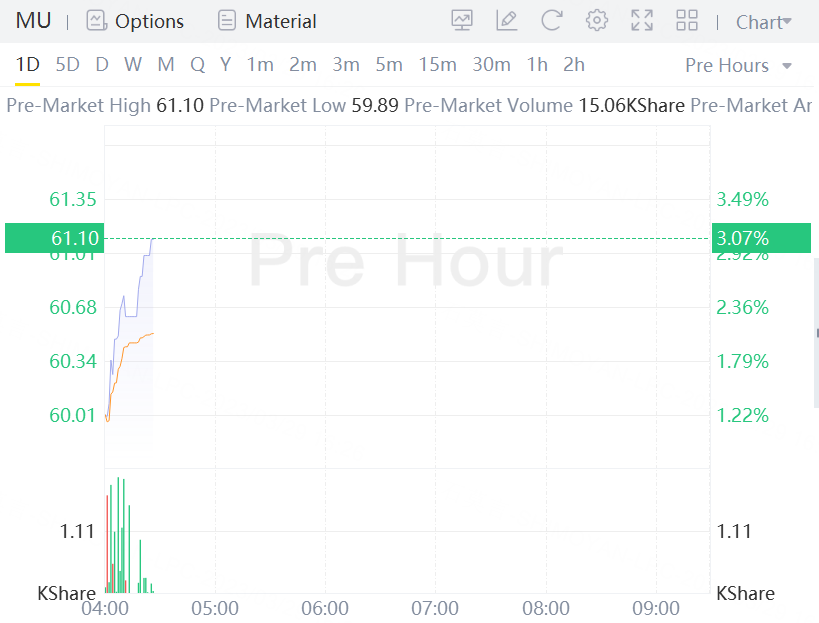Micron Technology, the largest US maker of memory chips, gave a better forecast for the current quarter than some analysts had feared, sparking hope that the worst of a brutal industry slump may be over.
Sales will be as much as US$3.9 billion (S$5.2 billion) in the fiscal third quarter, the company said in a statement on Tuesday. That compares with an average of analysts’ estimates of US$3.75 billion. The company also announced an increase in job cuts.
Micron stock jumps 3% in premarket trading.
“Customer inventories are getting better, and we expect gradual improvements to the industry’s supply-demand balance,” chief executive officer Sanjay Mehrotra said in the statement. The company delivered earnings for the second quarter that were in line with its projections “in a challenging market environment,” he said.
The forecast suggests the memory chip market may be poised for a comeback after a rough stretch. Over the past year, a steep drop in consumer demand spurred Micron’s customers to slash orders. Instead of buying new chips, they’ve been working through a pileup of excess inventory - a type of scenario that has long plagued the memory industry following boom years.
Micron’s shares rose about 1 per cent in extended trading following the announcement. The stock had gained 19 per cent this year on the hope that the worst of the industry’s downturn was over, closing at US$59.28 in regular New York trading.
The company is projecting a loss of about US$1.58 a share in the current period, which includes a 45-cent impact associated with US$500 million in inventory writedowns. Analysts had estimated a loss of 84 cents a share.
Makers of phones and computers are dealing with weak consumer spending triggered by rising inflation. Micron’s chips, which store and help handle information in such devices, are particularly vulnerable to swings in demand because products from rival companies are directly interchangeable and are traded like commodities.
Rapid fluctuations in the balance between supply and demand can leave producers selling the components for less than they cost to make. Even though Micron shipped more computer memory chips last quarter, revenue still shrank because prices fell about 20 per cent.
Three months ago, Micron announced cost-cutting measures, including a 10 per cent workforce reduction and a slowdown in investment in new production. While the revenue picture will improve in the second half of the year, profitability will remain difficult, it had said.
Micron said Tuesday that its total headcount reduction will now equal 15 per cent. Micron is reducing its spending on new plants and equipment by 40 per cent to US$7 billion this year, according to presentation slides posted on its website.
For 2023, the company expects that demand will grow faster than supply. Micron projects a transition to sequential revenue growth, saying that inventory has peaked and end markets such as smartphones and personal computers are contracting less severely than feared. Micron’s data centre unit bottomed in the second fiscal quarter, it said.
Micron competes with South Korea’s Samsung Electronics and SK Hynix. Hynix - which, like Micron, is focused mostly on memory - has also suffered losses, causing it to curb expansion plans. Samsung, meanwhile, has a more diversified business. It’s the world’s largest smartphone maker and has other sizable divisions, allowing it to remain profitable and have the cash to invest.
The pace at which profitability recovers will be determined by whether the company’s peers follow its lead and reduce production to the point that supply will be below last year’s level, Mr Mehrotra said in an interview. Other companies have taken actions to varying degrees, he said.


